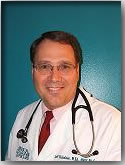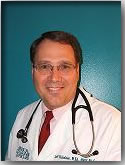ABSTRACT
We assessed whether physician assistant (PA) and nurse practitioner (NP) utilization increases liability. In total, 17 years of data compiled in the United States National Practitioner Data Bank (NPDB) was used to compare and analyze
malpractice incidence, payment amount and other measures of liability among doctors, PAs and advanced practice nurses (APNs).
From 1991 through 2007, 324,285 NPDB entries were logged, involving 273,693 providers of interest. Significant differences were found in liability reports among doctors, PAs and APNs. Physicians made, on average, malpractice payments twice that of PAs but less than that of APNs. During the study period the probability of making a malpractice payment was 12 times less for PAs and 24 times less for APNs. For all three providers, missed diagnosis was the leading reason for malpractice report, and female providers incurred higher payments than males. Trend analysis suggests that the rate of malpractice payments for physicians, PAs and APNs has been steady and consistent with the growth in the number of providers.
There were no observations or trends to suggest that PAs and APNs increase liability. If anything, they may decrease the rate of reporting malpractice and adverse events. From a policy standpoint, it appears that the incorporation of PAs and APNs into American society has been a safe and beneficial undertaking, at least when compared to doctors.
INTRODUCTION
Physician assistants (PAs) and nurse practitioners (NPs) were introduced in the United States health care system to improve the delivery of health care services and assist the overburdened primary care doctor.
12 This was considered a medical experiment at the time as a means to extend
health care services to a growing population. During four
decades, a series of federal policies has ensconced the PA and NP in American society; they are considered effective in the services they provide, and patient satisfaction does not appear to differ from that of physicians.
13 They are located throughout the American system and in all roles traditionally occupied by physicians, often at higher levels in underserved locations.
11 Patients and other health care providers nationwide recognize PAs and NPs. They are licensed to practice and prescribe in all states, and receive compensation for their services through Medicare, Medicaid and most all insurance companies. Yet little is known about disciplinary actions and malpractice claims when patients are injured by PAs and NPs.
The nurse role has evolved into a spectrum of providers: NPs, clinical nurse specialists (CNSs), certified nurse midwives (CNMs) and certified registered nurse anesthetists (CRNAs). Collectively these semi-autonomous nurses are known as advance practice nurses (APNs). PAs and APNs are often counted as a body of health care workers that provide clinical services traditionally provided only by doctors.12 We set out to investigate if PAs and NPs negate any of their cost effectiveness by examining a national registry of malpractice and adverse action reports.
Only a few studies have examined whether PA/NPs invoke liability differently than doctors.3,4,10 All studies concluded that the liability of an NP or PA was less than that of a doctor in terms of malpractice payments or number of citations. The source of data for these small studies, undertaken in the early 1990s, was the nascent National Practitioner Data Bank (NPDB). Since the inception of the NPDB in 1990, a great deal of experience and data has accumulated. According to the NPDB 2005 Annual Report:
Less than one percent of all medical malpractice payment reports are related to PAs. Among medical malpractice, diagnosis-related problems and treatment-related payments were the greatest. The second largest payments, both cumulatively and in 2005, were due to PAs. Approximately 2 percent of malpractice payment reports were for professional nurses. Most of them related to monitoring, treatment and medication problems; proportions of payments were 61.9 percent for non-specialized registered nurses, 20.0 percent for nurse anesthetists, 9.3 percent for nurse midwives, and 8.8 percent for nurse practitioners. The ratio of nurse payment reports to physician payment reports varied from 0.02 percent in Vermont to 9.0 percent in Alabama.
The National Practitioner Data Bank
The National Practitioner Data Bank (NPDB) was established under Title IV of Public Law 99-660 of the Health Care Quality Improvement Act of 1986. It receives federally required reports of malpractice payments and adverse actions on heath care practitioners. This federal registry has recorded actions reported on physicians, dentists, pharmacists and other licensed health care practitioners in the United States since September 1990. Medicaid and Medicare "exclusions" were included in 1997. These include actions wherein a provider was found guilty of a malpractice claim and was excluded from filing for reimbursement from the federal government for further health care of patients. Adverse actions can involve licensure, clinical privileges, professional society membership and exclusions from Medicare and Medicaid participation. Reports can involve health care-related criminal convictions, civil judgments and other adjudicated actions or by any civil or criminal court system. Malpractice refers to misconduct, unprofessional conduct, mismanagement or negligence. Liability refers to legal responsibility, accountability responsibility or charge.
As of January 2008, the NPDB data consists of more than 414,404 cases and 51 variables, including information about characteristics of health care practitioners with medical malpractice payments and adverse actions. The list of actions includes license actions, clinical privileges actions, professional society membership actions, Drug Enforcement Administration (DEA) actions and Medicaid/ Medicare program exclusions. Four report types were reclassified into adverse action reports, consisting of data with format used before and after November 1999, and malpractice payment, consisting of data with format used before and after January 2004.
Health care providers in this study were selected and reclassified into three types: (1) physicians, including allopathic physicians (MD/MBBS), osteopathic physicians (DOs) and physician interns/residents; (2) PAs; and (3) APNs. The number of active physicians was obtained from the Physician Characteristics and Distribution in the U.S., 2008 edition, a report published by the American Medical Association (AMA). The number of PAs was obtained from the American Academy of Physician Assistants Information Update.1,2 The number of APNs was obtained from the National Nursing Survey Report (NSSR) of the U.S. Health Resources and Services Administration.6,7 NNSR data includes both active and non-active APNs. The number of APNs is known only generally because there is no centralized registry of graduates and clinically active nurses.
METHOD
The NPDB maintains a website with data available for downloading.
5 Data recorded from 1 January 1991 through 31 December 2007, were identified for analysis. Independent variables were PAs, APNs and doctors (MD, DO, MBBS). Dependent variables included medical malpractice payment incidence, payment amount, ratios of payments to provider type, state licensure and professional society membership actions, federal program exclusions, age and time-in-practice of provider and patient and provider gender. Compensation for damages includes averages (mean and median) of payments, total of payments (current value of dollars in millions) and total amount of payments (which was adjusted for inflation). For comparison purposes, all payments were changed to 2008 dollars using the percent inflation for each year based on a calculated formula from the Consumer Price Indexes of the U.S. Department of Labor, Bureau of Labor Statistics (BLS).
8 Data for active physicians was taken from Physician Characteristics and Distribution in the U.S., 2008 edition, American Medical Association (received from the Data Coordinator, Survey & Data Resources, American Medical Association: personal communication, AMA, 14 May 2008). Data for active PAs was obtained from the American Academy of Physician Assistants Information Update.
1,2 Data for APNs was derived from the National Nursing Survey Reports (NNSR) of the U.S. Health Resources and Services Administration.
6,7 NNSR data includes both active and nonactive APNs. Nonparametric statistics include Chi-square and Sheffe's method of one-way ANOVA for comparison among three types of health care providers.
. . .Continue to read rest of article (PDF)









